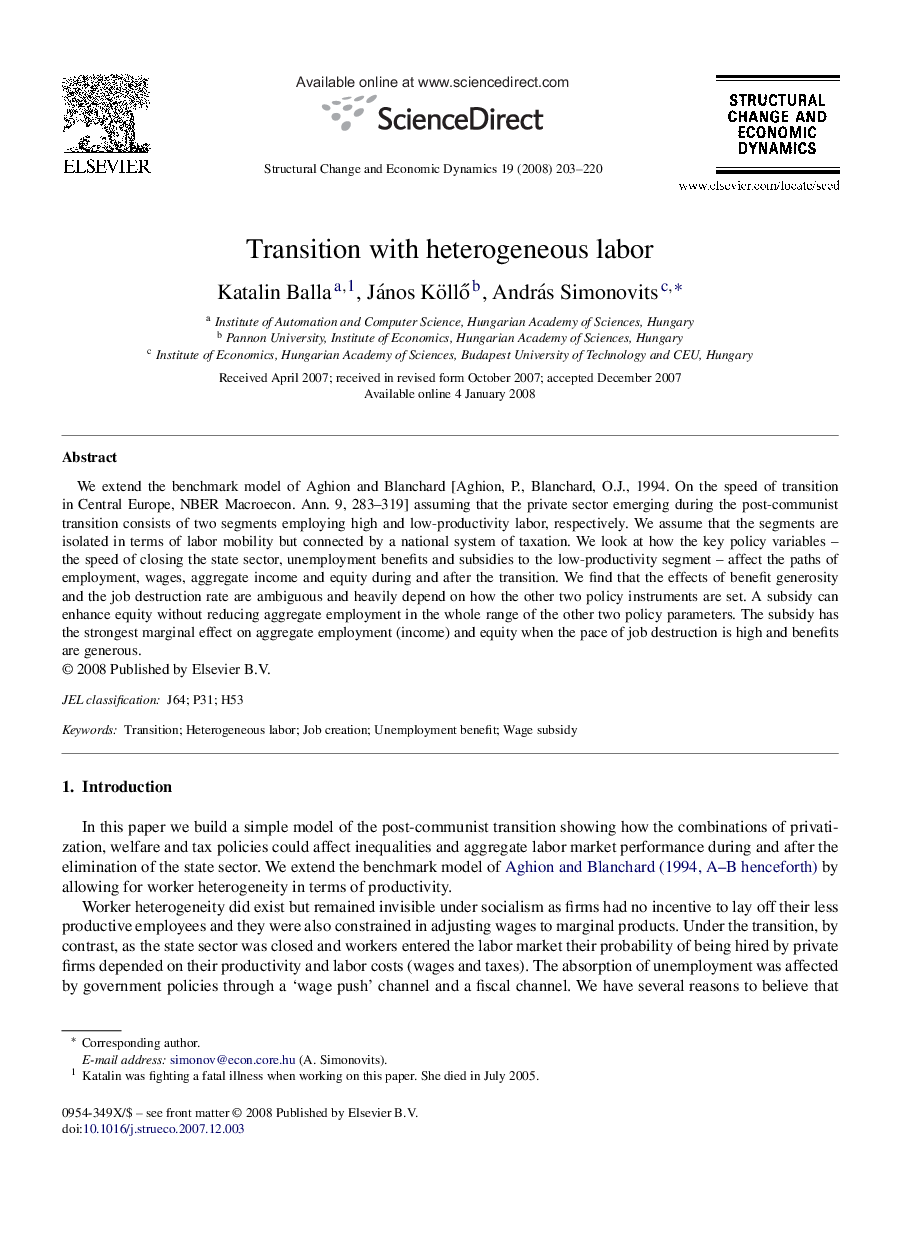| Article ID | Journal | Published Year | Pages | File Type |
|---|---|---|---|---|
| 989747 | Structural Change and Economic Dynamics | 2008 | 18 Pages |
Abstract
We extend the benchmark model of Aghion and Blanchard [Aghion, P., Blanchard, O.J., 1994. On the speed of transition in Central Europe, NBER Macroecon. Ann. 9, 283-319] assuming that the private sector emerging during the post-communist transition consists of two segments employing high and low-productivity labor, respectively. We assume that the segments are isolated in terms of labor mobility but connected by a national system of taxation. We look at how the key policy variables - the speed of closing the state sector, unemployment benefits and subsidies to the low-productivity segment - affect the paths of employment, wages, aggregate income and equity during and after the transition. We find that the effects of benefit generosity and the job destruction rate are ambiguous and heavily depend on how the other two policy instruments are set. A subsidy can enhance equity without reducing aggregate employment in the whole range of the other two policy parameters. The subsidy has the strongest marginal effect on aggregate employment (income) and equity when the pace of job destruction is high and benefits are generous.
Related Topics
Social Sciences and Humanities
Economics, Econometrics and Finance
Economics and Econometrics
Authors
Katalin Balla, János KöllÅ, András Simonovits,
